All products featured are independently chosen by us. However, SoundGuys may receive a commission on orders placed through its retail links. See our ethics statement.
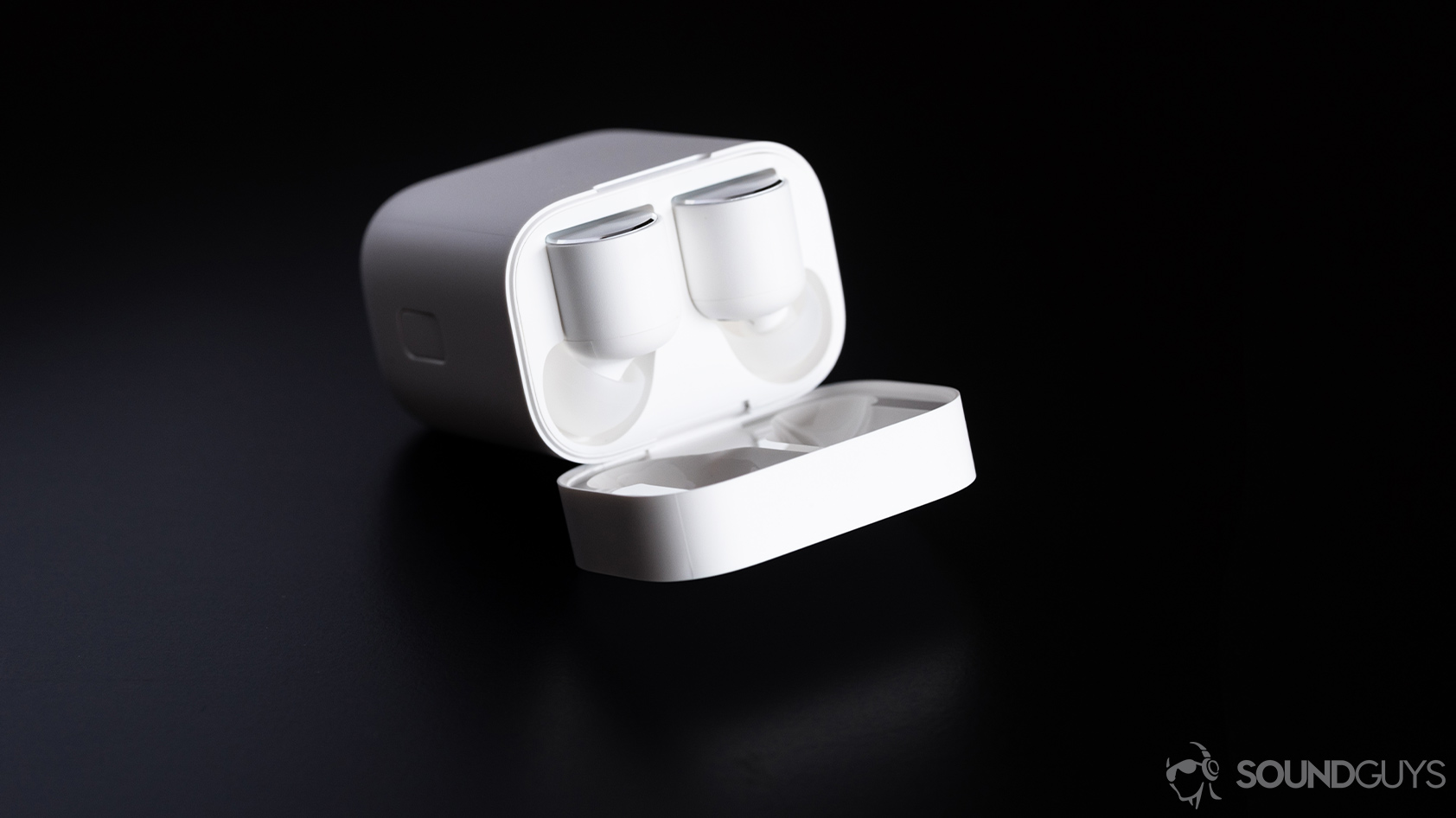
Xiaomi Mi True Wireless review
August 7, 2019
Xiaomi Mi True Wireless
UPDATE December 9, 2021: The Xiaomi Mi True Wireless has been discontinued. Alternative options include the Samsung Galaxy Buds Plus, the Jabra Elite 85t, and the Apple AirPods Pro.
True wireless earbuds are always compared to the AirPods, and we have to make the comparison with the Xiaomi Mi True Wireless. These white, stemmed earbuds mimic Apple’s design with a few tweaks. For one, these are IPX4-rated and feature noise canceling technology. The biggest difference is in price: Xiaomi’s earbuds are half of what the base-model AirPods cost—but does the Xiaomi Mi True Wireless give the competition a run for its money?
Who is the Xiaomi Mi True Wireless for?
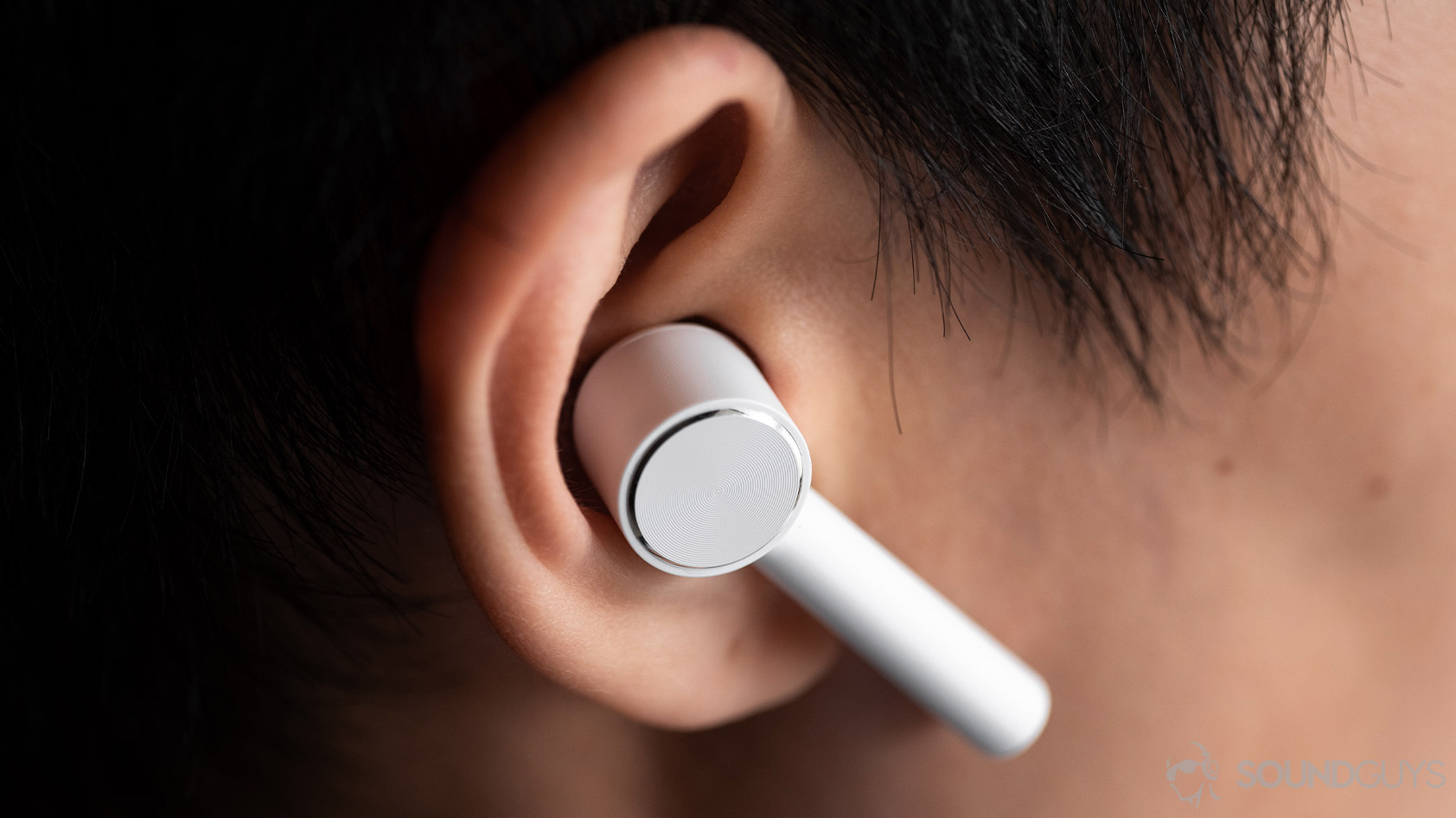
These earbuds are great for anyone in need of good true wireless earbuds that don’t cost a fortune. The Xiaomi Mi True Wireless sport a familiar design and feature noise canceling. While the ANC isn’t as effective as Sony’s products, it can hush some ambient noise. What’s more, the IPX4 rating means they can withstand sweat and light rain showers.
What’s it like to use the Xiaomi Mi True Wireless?

The matte white plastic design isn’t eye-catching, but it repels fingerprints. You may find the earbud stems annoying, as they’re long (~32mm), and you might never adjust to feeling the plastic against your cheek. What’s more: they’re just long enough that if I went to smooth my hair or itch my face, I’d often knock one out of my ear.
The plastic may feel cheap but it's easier to hold than something shiny and slick.
There is one great positive to the design: dedicated nozzles. This makes for a better fit than the AirPods. Sensors sit under the hood and facilitate automatic ear detection. This allows music playback to play/pause when the ‘buds are inserted and removed accordingly. Each earbud panel operates different controls, but functionality is limited. All you can do is access your virtual assistant, answer a call, and toggle noise canceling, all of which is done by a combination of tapping or tapping and holding either touch panel. If you want to skip tracks or adjust the volume, you have to pull out your phone.
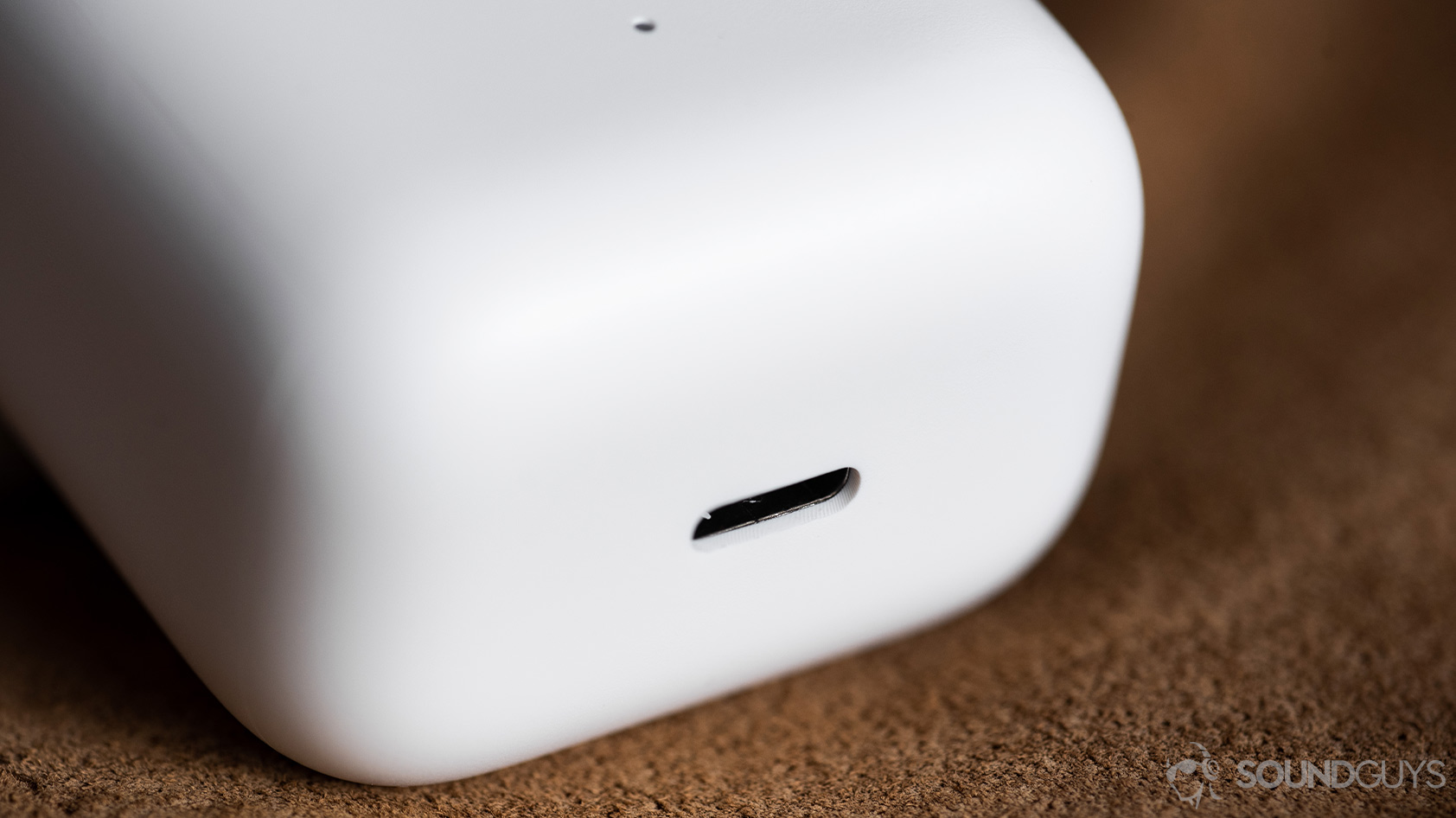
The charging case appears plain and holds one button on the side to initiate pairing. The bottom houses a USB-C input on the for charging, and there’s a single LED below the latch to indicate battery status.
How long does the battery last?
A single charge affords you 3.3 hours of playback, which is what we’ve come to expect from an average pair of true wireless earbuds. We test at a constant 75dB output, so if you listen to quieter levels, you’ll likely squeeze out more time. It takes approximately one hour to complete a full charge, and they don’t support quick charging as many other earbuds do. The case provides an additional 2 charges for on-the-go listening.
How do you connect the Xiaomi Mi True Wireless to your phone?
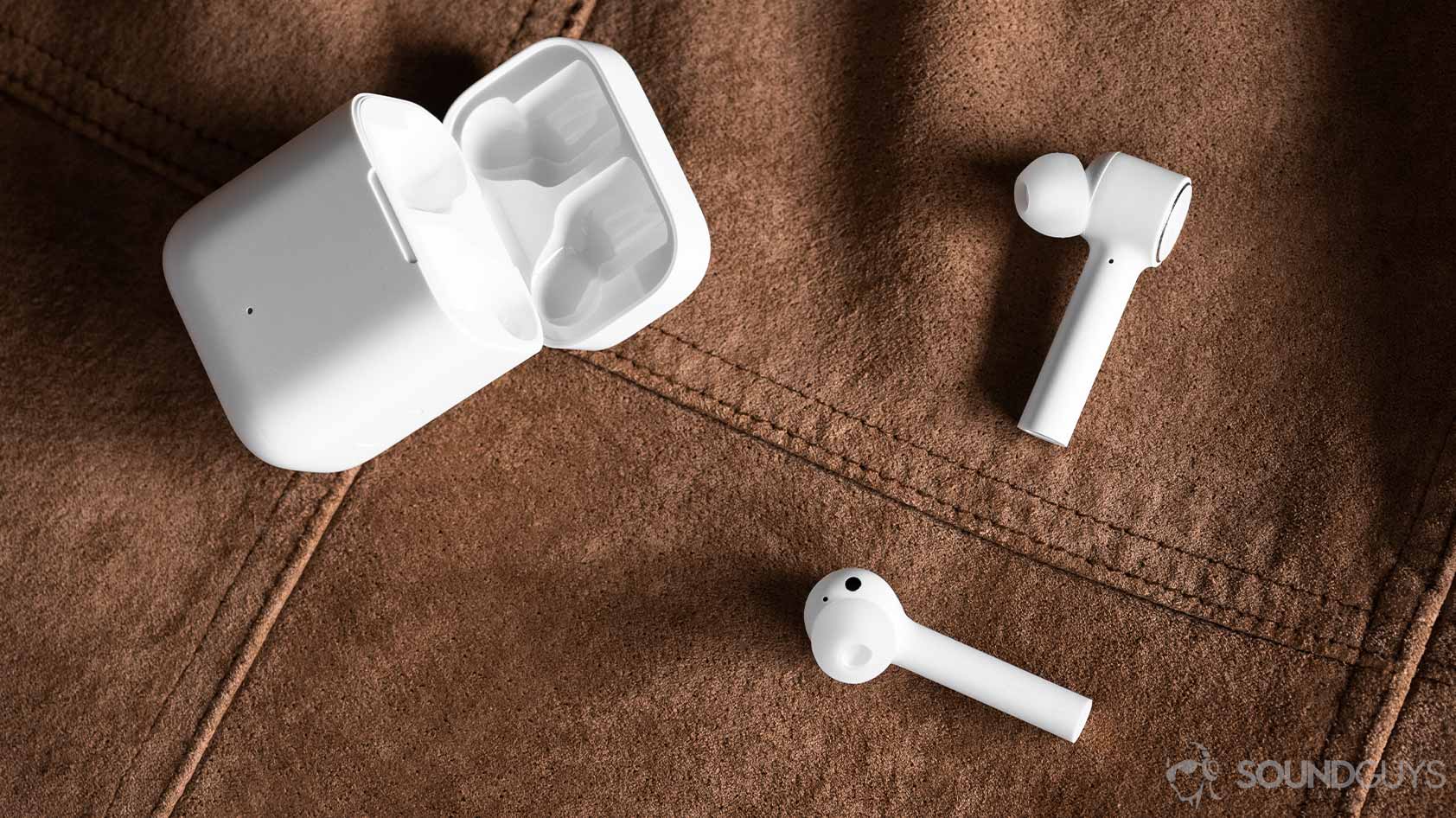
Connecting the Mi True Wireless to your phone easy, just open the case and hold the button for two seconds. Once the case’s LED blinks, the earbuds are in pairing mode. From there, select “Mi True Wireless Earphones” from your smartphone’s Bluetooth menu.
If you’re an iPhone user, you’re in luck because these Bluetooth 4.2 earbuds support AAC. While Android also supports the AAC codec, its performance depends on what smartphone you’re using. Plus, you may run into delay issues. Irrespective of what device you’re using, the Xiaomi Mi True Wireless afford 10 meters of wireless range before running the risk of dropouts. Connectivity is reliable with these earbuds as I was able to walk about 11 meters from my phone prior to experiencing any stutters.
How to enable multiconnect
Entering multiconnect is strange: it dedicates one earbud to device A and the secondary earbud to device B. Most products allow both earbuds to remain connected to both devices, but Xiaomi delegates one device per earbud. It’s a little jarring but I got used to it.
First, make sure you’ve cleared all previous pairing history. Put both earbuds in the case and hold the function button for 10 seconds. From there, place just one earbud into the charging case and hold the function button for two seconds. Then, select the Xiaomi Mi True Wireless from the desired device’s Bluetooth menu. Remove the first earbud and place the second one into the case. Hold the button for another two seconds and select the Xiaomi Mi True Wireless from the secondary device’s menu.
It’s convoluted, and a bit annoying to clear device history, but it works.
What do the Xiaomi Mi True Wireless sound like?
These sound good. As indicated by the frequency response chart, low-end frequencies are about as loud as midrange ones. This means that vocals, guitar licks, and piano solos sound about as loud as kick drums, perhaps a hair louder assuming you can detect it. Audio is fairly clear, however, once I exceeded 60% volume on my phone, detail began to degrade. It was hard for me to distinguish between cymbal hits and resonant guitar notes.
The earbuds sound great, but performance is highly dependent on getting a good fit.
Although the bass response looks accurate in the frequency response chart, the Mi True Wireless have poor isolation properties. I was rarely able to get a proper seal no matter what size of ear tips were used. If I jammed them into my ear canals, I could get a faux-suction for a bit. Apparently, I wiggle my ears a lot, though, which loosened any cogent seal I was able to achieve. If you’re planning to move around a lot, these may not be the right earbuds for you.
Lows, mids, and highs
In Half Alive’s song Tip Toes, prominent bass beats dominate the song along with synthesized notes and dance-inspired rhythms. The song begins with Josh Taylor vocalizing a melodic, ethereal “oh” accompanied by clapping. The claps sound pleasant and aren’t overemphasized, which can cause pain if highs like that are too loud. Taylor’s vocals are clearly audible relative to the clapping.
A few beats later, a quick drumroll initiates a bass drop and the song shifts into third gear. This is where the Xiaomi Mi True Wireless really shine: the constant drumrolls and kickdrum don’t interfere with the cymbal hits or drumming of the sticks against the drum kit’s metal edges. Everything remains audible, and Taylor’s voice is never lost within the din. Again, though, clarity does fall to the wayside the louder the volume gets.
Is the noise canceling any good?
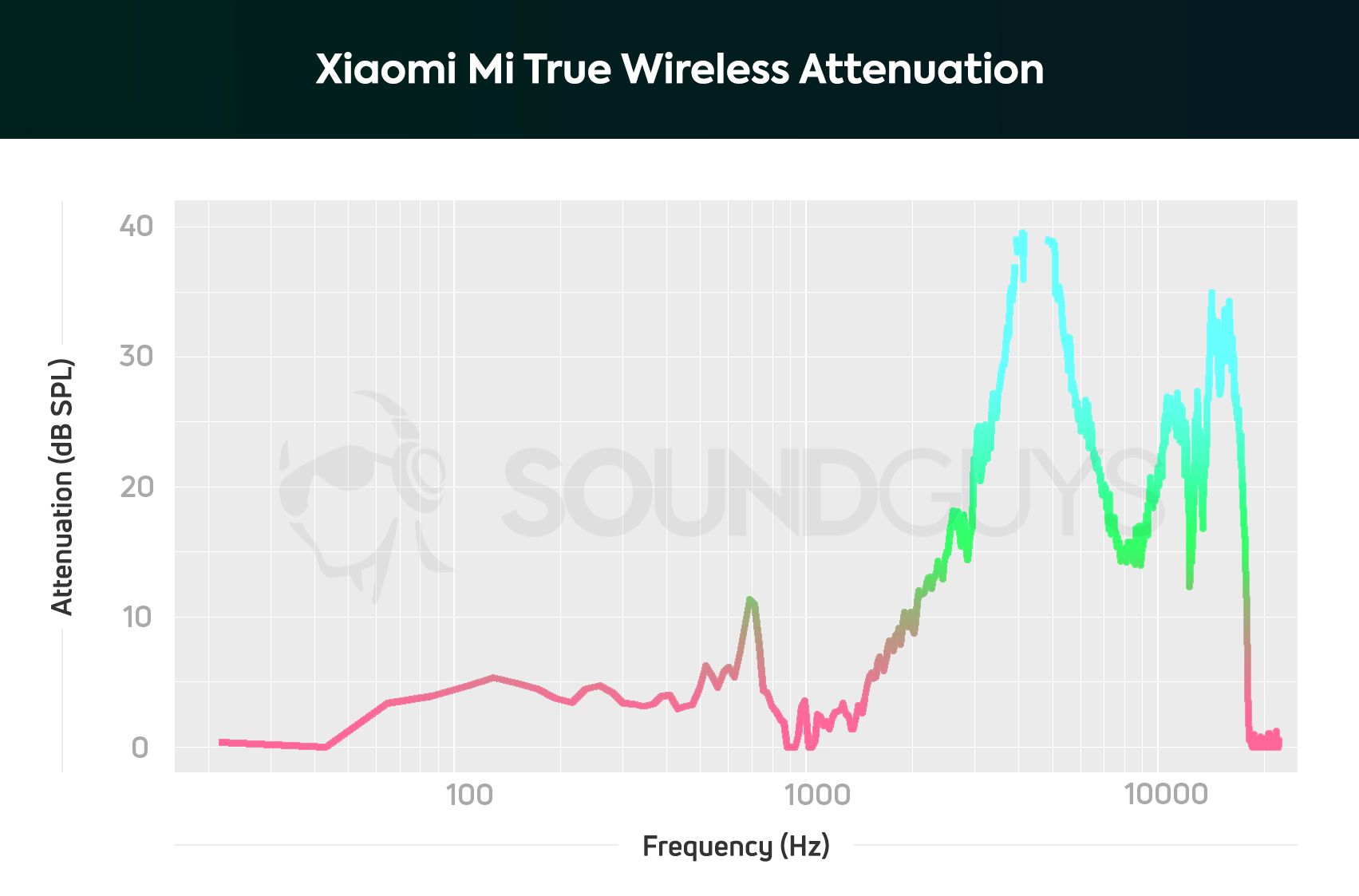
Relative to the nearly non-existent passive isolation the earbuds provide, the ANC helps. Yet it’s not comparable to Sony’s old noise canceling earbuds, the WF-SP700N, let alone the new WF-1000XM3.
Unfortunately, good ANC technology isn’t one of those things you can cut corners around. If you want something that’s worthy of taking on a flight, you’re going to have to shell out for it in a full-fledged pair of over-ear headphones or a Sony’s flagship true wireless.
Is the Xiaomi Mi True Wireless good for phone calls?
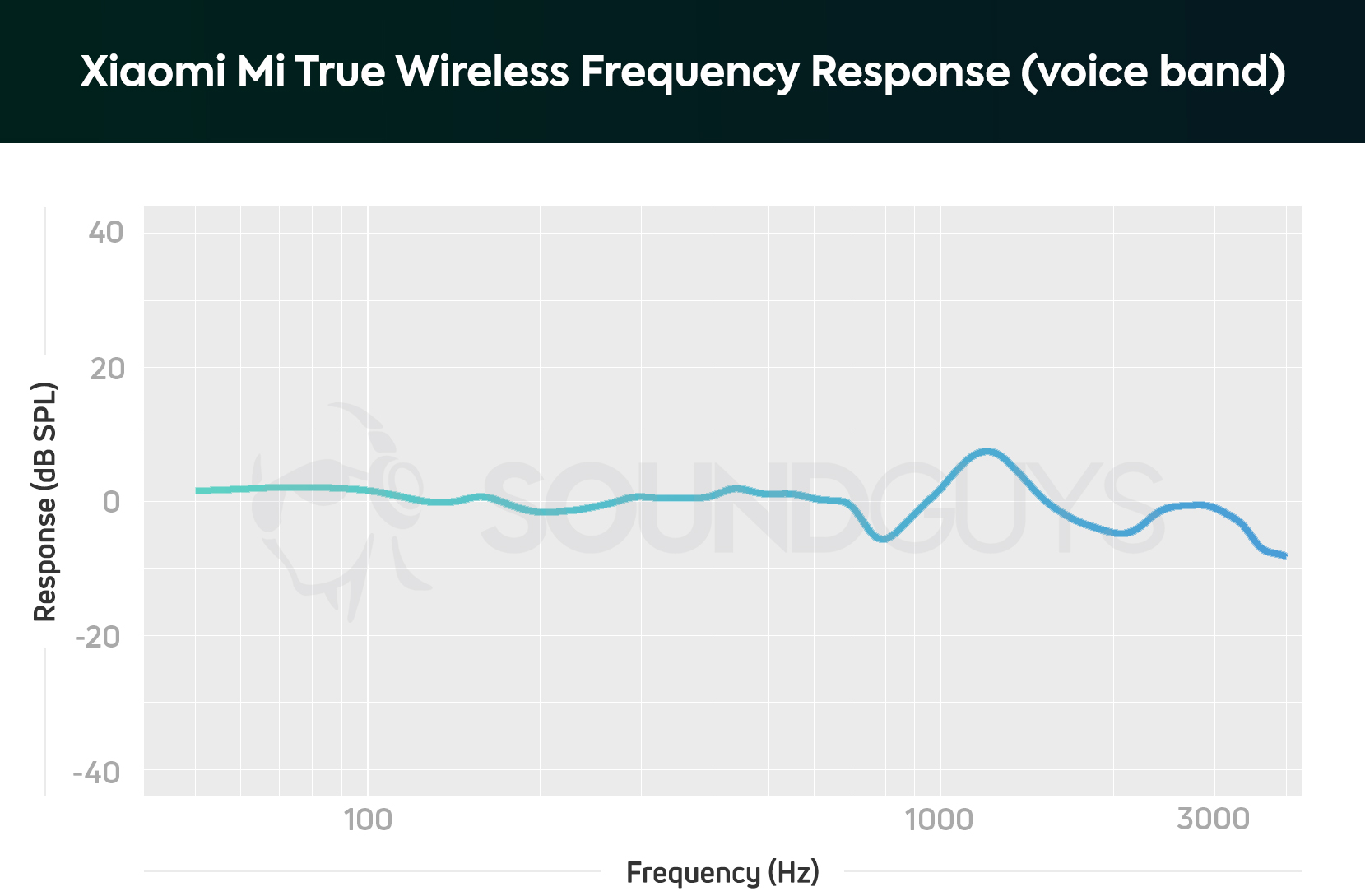
Yes, the Mi True Wireless is good for phone calls. However, there are certain times when it relays static along with your voice as demonstrated in the sample below. When it performs optimally, the sound is great regardless of your vocal pitch. Every three or four calls I made ran into this static issue, though. It’s not a dealbreaker, but if you’re looking for a pair of earbuds to consistently produce good voice quality with all of your work calls, you may want to keep looking.
Xiaomi Mi True Wireless microphone demo:
Should you buy the Xiaomi Mi True Wireless?
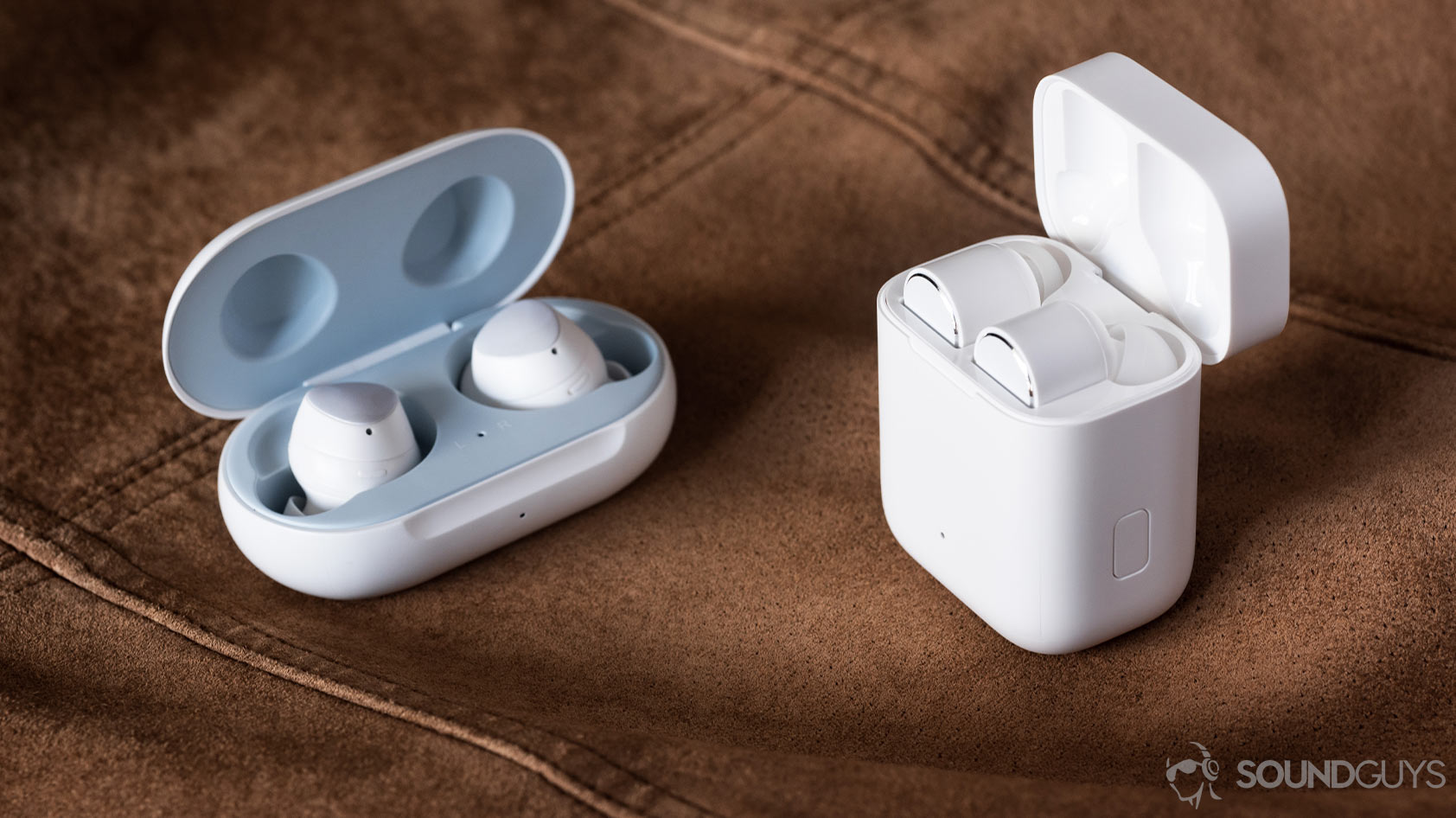
Unless you’re a die-hard Xiaomi fan or someone who needs their earbuds to look like AirPods from a distance, there are better options out there. Yes, these feature noise canceling technology, but it’s not anything to write home about. In fact, you can buy the Sony WF-SP700N (renewed) for around $60.
While there are some great qualities about the Xiaomi Mi True Wireless earbuds—like the sound quality, if you can get a proper fit—you can get better overall performance from the Creative Outlier True Wireless or the Anker Soundcore Liberty True Wireless. The former supports both aptX and AAC, has reliable audio and mic quality, and a better fit than the Xiaomi Mi True Wireless. The Anker Soundcore Liberty True Wireless, on the other hand, features a similar stemmed design, is IPX5-rated, and lasts 1.5 hours longer on a single charge.
No matter what you go for, all budget true wireless earbuds have drawbacks. It’s just a matter of prioritizing what’s best for your needs.